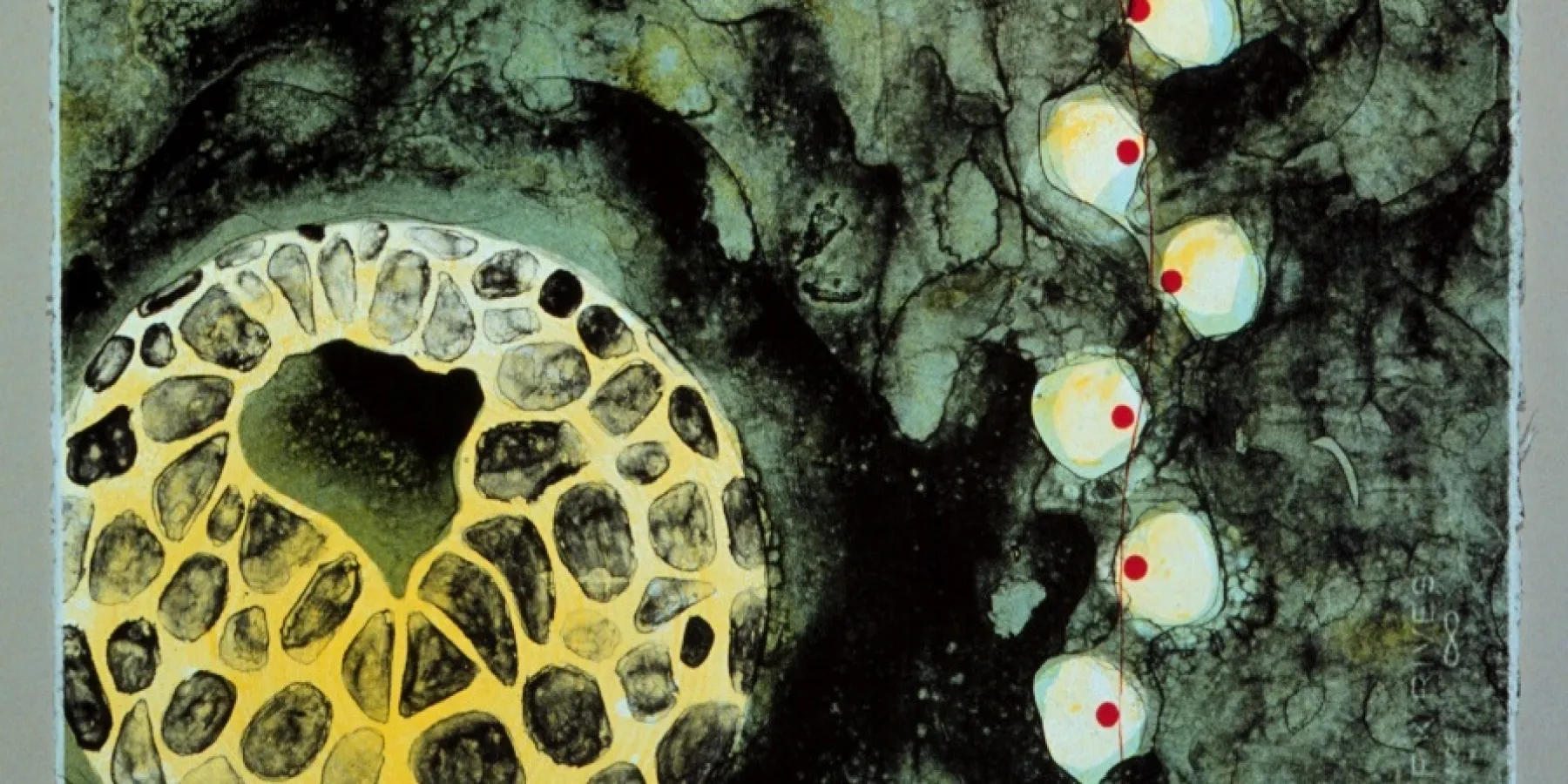Abstract
Corpus Delicti is a collection of drawings on 30" × 22" paper. Each is inspired by seeds, which hold quiet, hidden potential for transformation and regeneration. Botanicals are familiar but mysterious in their capacity to enact cycles of birth and death. In nature as in medicine, themes of health, illness, reciprocity, and vulnerability are essential features of participation in these cycles. Patients and clinicians in particular negotiate compassion, respect, and dignity in their relationships and clinical encounters. These drawings offer visual exploration of these and other values.
Figure 1. Yellow Body (State 1), by Tracy Meyer with Collaborating Tamarind Institute Printer Sharron Throp
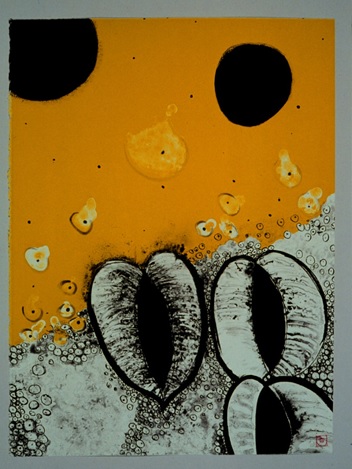
Media
2-color lithograph, Edition 9.
Caption
One night while searching for a certain shade of yellow, I looked up to see the moon emerging from a corpus luteum of clouds. Just as a follicle is induced to open and provides evidence of life at its boundary, so shared decision-making processes emerge in the patient-clinician relationship.
Figure 2. Yellow Body (State 2), by Tracy Meyer with Collaborating Tamarind Institute Printer Sharron Throp
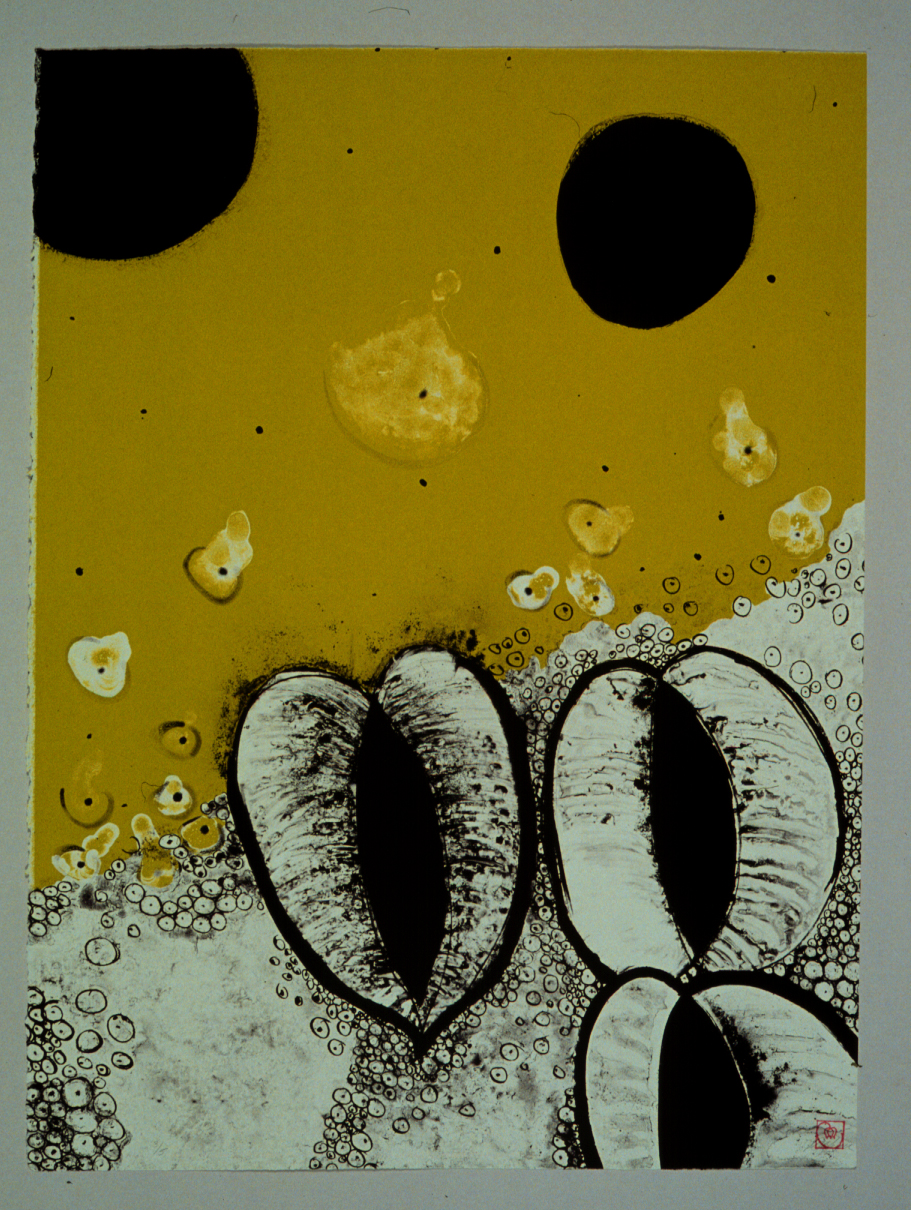
Media
2-color lithograph, Edition 9.
Caption
Two hues of yellow provide ground for release and growth. Just as a seed is a unit of transduction, so trust can be construed as a critical nutrient for therapeutic potential in patient-clinician interactions.
Figure 3. Remission, by Tracy Meyer with Collaborating Tamarind Institute Printer Brian Garner
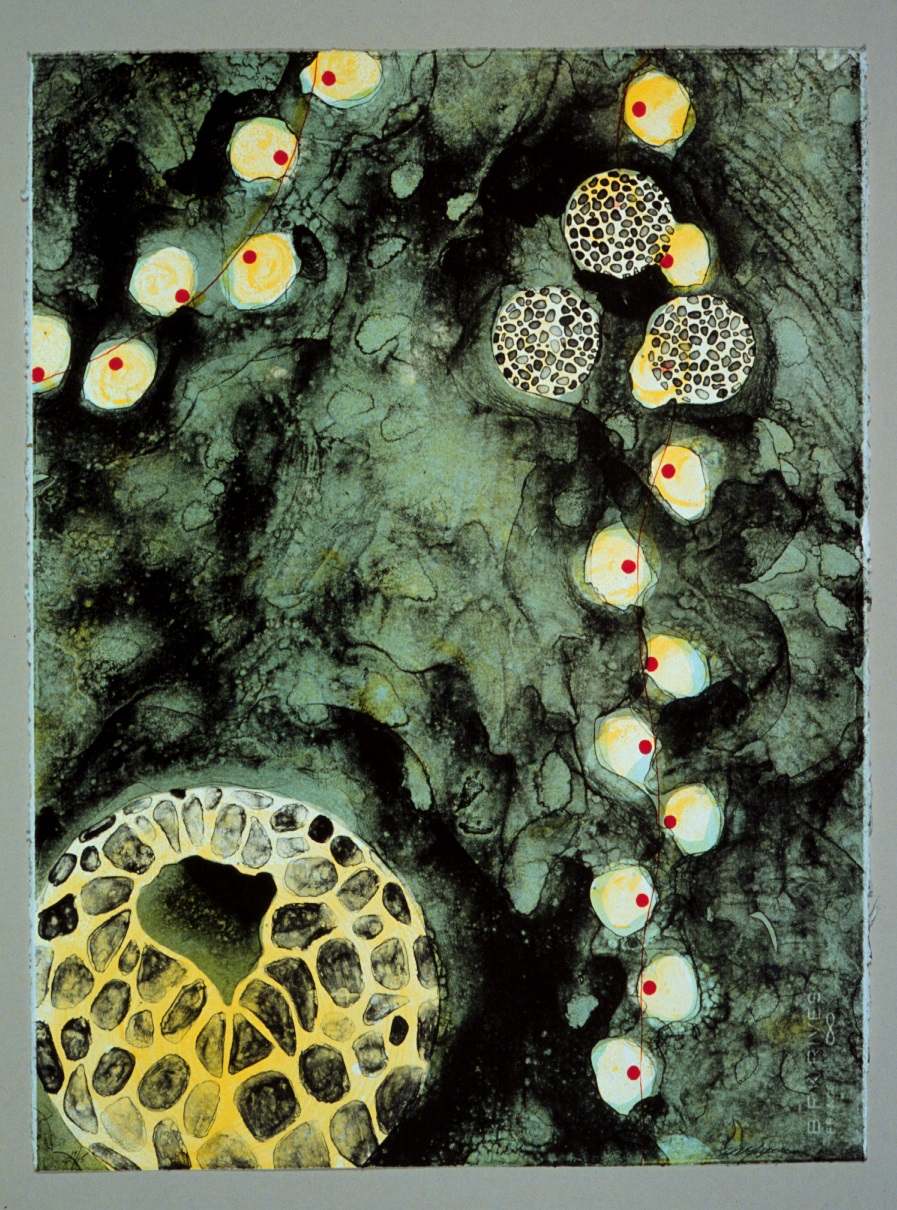
Media
5-color lithograph, Edition 15.
Caption
Draping pods and dividing cells seem to spread darkness apart and enable emergence of brightness, as perhaps occurs when a patient’s disease is in remission.
Figure 4. Dark Lumen, by Tracy Meyer with Collaborating Tamarind Institute Printer Catherine Chauvan
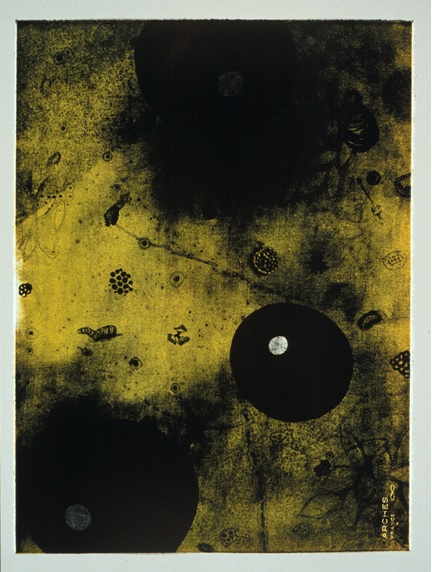
Media
4-color lithograph, Edition 15.
Caption
Organic forms suggest transformation, as one’s body can be considered a gateway to, a window on, or a vessel for one’s passage through life. Patients’ encounters with clinicians can be critical steps along this passage, and clinicians’ capacity for compassion and empathy gives shape to patients’ experiences and remembrance of those encounters.
Figure 5. How Night is Divided, by Tracy Meyer
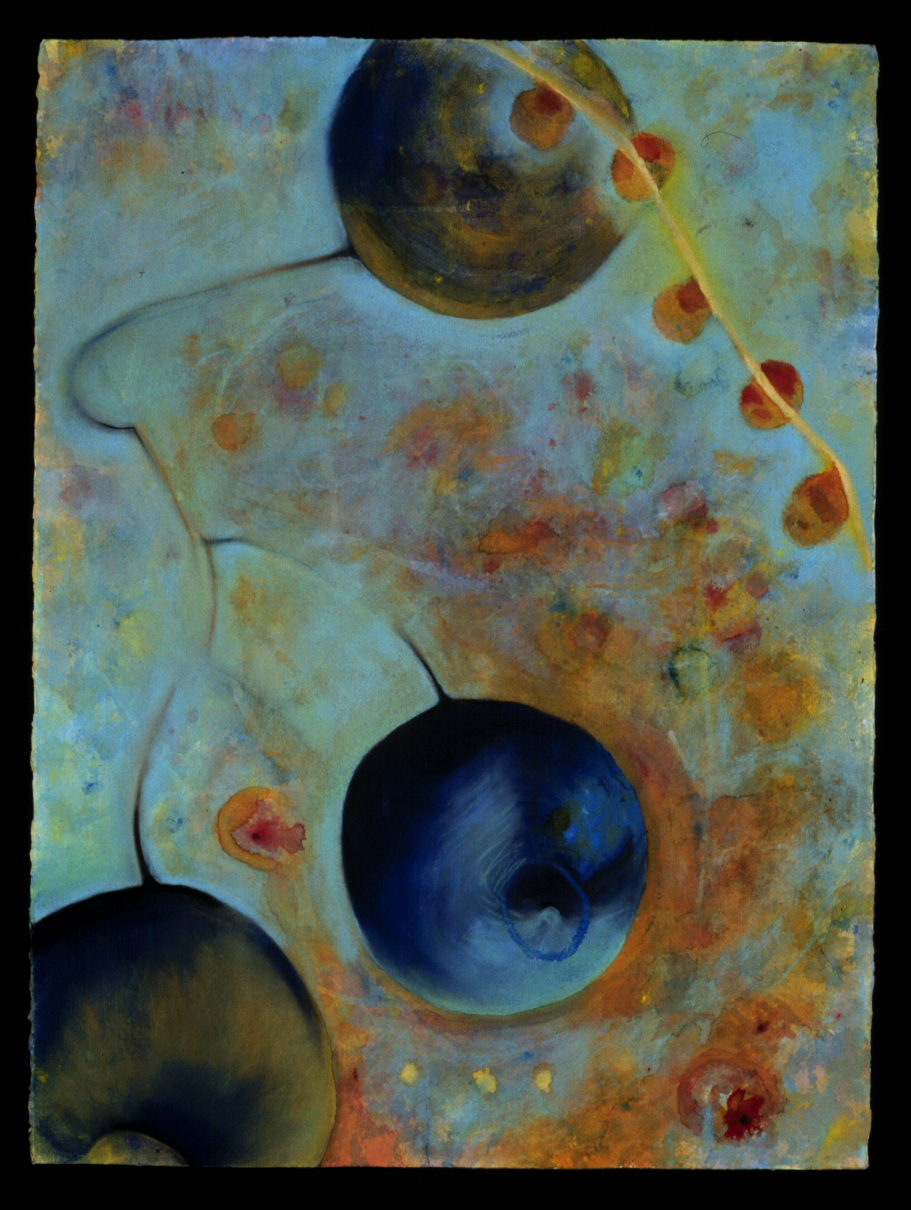
Media
Pastel, ink, gouache, watercolor, and conté.
Caption
This drawing of cells dividing in a growing seed suggests a growth of space as boundaries are expanded. Boundaries can be construed as preserving a safe enclosure for making sense and meaning of illness or injury, but they are permeable, too, presenting opportunities for us to grapple with uncertainty.
Figure 6. Misericordia (Soft Angled Skin), by Tracy Meyer
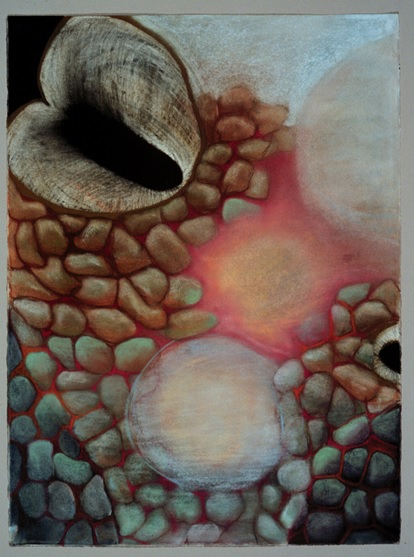
Media
Pastel, charcoal, and conté.
Caption
Just as a clinician’s gentle touch can be felt on a patient’s skin as an expression of respect and mercy, so exterior skin protects regenerating corpuscles beneath.
Figure 7. Misericordia (Vital Breaths), by Tracy Meyer

Media
Pastel, charcoal, conté, and ink.
Caption
Through a process of covering and erasing, blacks, whites, and grays form the pod figures. The drawing reveals a reservoir of color, of germinative power. This drawing expresses patient-clinician relationships through a visual metaphor of breath: inhalation and exhalation are reciprocal, one relies on the other for purpose and for healing.
